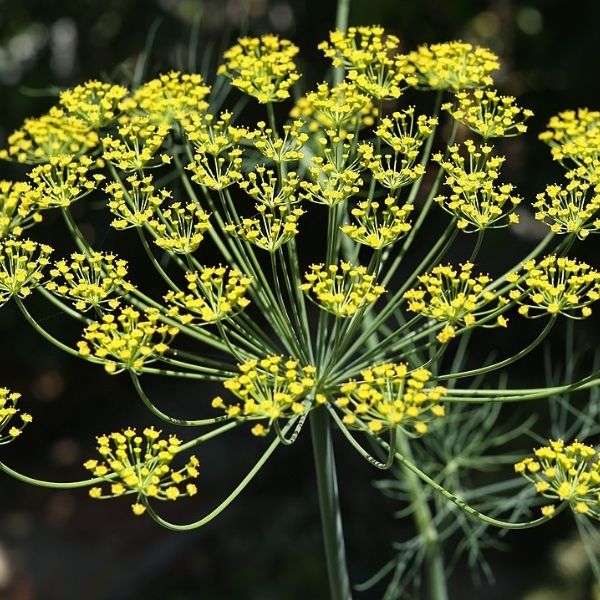Anethum graveolens, commonly known as Dill, is an aromatic herb that belongs to the Apiaceae family. It is native to the Mediterranean region and is widely cultivated for its culinary and medicinal uses. Here are some key features and uses of Anethum graveolens:
Culinary Uses: Dill is well-known for its culinary applications and is used as a flavoring herb in various cuisines. Its feathery leaves, known as dill weed, have a fresh, tangy flavor that pairs well with fish, vegetables, salads, soups, and sauces. Dill seeds are also used as a spice and have a slightly bitter, sweet, and citrusy taste. They are often used in pickling, bread, and potato dishes.
Medicinal Properties: Dill has been used in traditional medicine for its potential health benefits. It contains essential oils, flavonoids, and other phytochemicals that contribute to its medicinal properties. Dill is believed to have digestive and carminative properties, helping to relieve indigestion, bloating, and gas. It is also used as a diuretic and may have antimicrobial and anti-inflammatory effects, although more research is needed to fully understand its therapeutic potential.
Infantile Colic: Dill water, which is an infusion made from dill seeds, has been used as a traditional remedy for infantile colic. It is believed to help soothe digestive discomfort and reduce gas in infants. However, it is important to consult with a healthcare professional before using any herbal remedies for infants.
Aromatic and Essential Oil: Dill has a pleasant aroma due to the presence of essential oils in its leaves and seeds. The essential oil extracted from dill is used in perfumes, soaps, and cosmetics. It is also used in aromatherapy for its calming and soothing effects.
Culinary and Herbal Garnish: Dill sprigs, leaves, and flowers are used as a decorative garnish in culinary preparations, adding a touch of freshness and visual appeal to dishes. The delicate, yellow flowers of dill are edible and can be used as an attractive addition to salads and other dishes.
